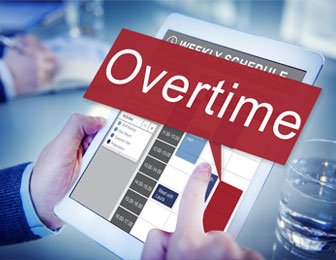Labor management: less cumbersome
From the labor management perspective there is a lot to be desired from most MES applications available in the market today. Key procedures like qualification, certification, training, recording, scheduling, attendance to shift pass-down, still remain either fully or partially manual in most plants. Labor management is being treated as more of a functional responsibility with only centralized HR department, which is not linked directly to the shop floor.
Ideally modern MES applications should help align labor management with other process management KPIs and help improve the management and handling of labor, through streamlining and building this functionality under the overall process spectrum.
Today we'll address current pain points and areas, where true value can potentially be added to the process through management of personnel by the MES.
1. Qualification and certification of employees
Currently in even the most high-tech plants employee database is either recorded and archived manually or exists over some spread-sheet, which needs to be periodically reviewed in order to ensure employees remain certified and trained. A modern MES application would only allow a personnel to gain access to an equipment or participate in a process, if and only their credentials meet the minimum requirement.
It would also send alerts to a particular employee, their supervisor and the HR department to inform, when the next training or certification needs to be done, to ensure that the employee is able to continue their work without any disruptions.
Such built-in qualification features would make an MES more desirable especially in industries, like Pharmaceutical, Medical Devices, Metallurgy or any such industry where training and certification needs to be renewed for the same employee, in comparatively shorter periods of time.
When the MES application is capable of checking and qualifying personnel and their access to process machinery, it brings multi-faceted benefits to the organization: the employee always remains aware of their training requirements, the process equipment remains safe and, most importantly, the process remains compliant without so much as a spread sheet being summoned.
2. Resource access control
MES application may help to ensure only requisite personnel get access to a particular resource, thereby allowing control measures to be implemented right at the application level.l. This kind of access control allows for more safety in the plant operation, helps preserve compliance standards.
3. Work planning and allocation
Even typically HR functions like attendance management and payroll can be linked directly to an MES.
Depending on the kind of work planned for the next number of shifts and days and correlating it with available personnel based on their qualification and availability, the MES should be able to provide a Shift wise work distribution plan, based on number of worker sub-groups, qualifications, production planning, CAPA (if initiated) and management feedback.
The real beauty of shift management through MES stems from the fact that the application is always online, always connected to the process, thereby allowing it to maintain real-time flow of information. It means that the process owners may be able to change deliverables, schedule maintenance, increase/decrease throughput and also keep all concerned personnel informed, well in advance.
The shift pass-down and its management is crucial in almost every plant, where a lot of effort is spent collecting data, then analyzing it and finally chalking out the deliverables for the next shifts. If the MES application can help automate the shift planning and shift pass-down, along with providing the capability to capture and analyze production data, it would become the single greatest tool for process owners and process personnel.
4. Shift logbook
The plant personnel may also use the MES application to create shift logs, where they might impart important observations, raise alarm pertaining to a dangerous situation, create status reports and mention normal pass-down data. The shift logbook feature t would help make the overall operation far more proactive, allowing for better management of short term deliverables, passing mission-critical information to management in real-time, allowing formation of dynamic maintenance calendars, initiating better containment procedures and helping workforce to remain aligned with management directives.
Any MES application which truly boasts of being modern should allow at least basic features of labor management discussed - automation alone does not solve any purpose unless it also ensures compliance, cost reduction, safety and continued value addition for a process. The utility which the MES can provide in workforce management is unparalleled provided the right MES is implemented to do the job. Not all MES applications in the market which claim to be I 4.0 enabled, might necessarily have what it takes to effectively manage the labor in your plant.


